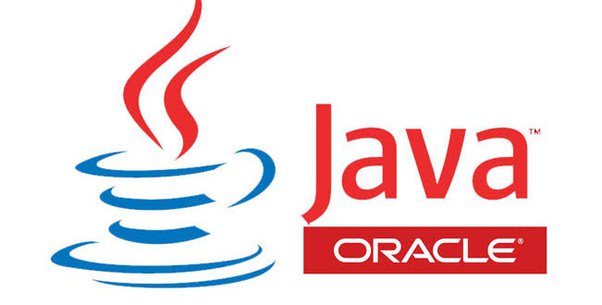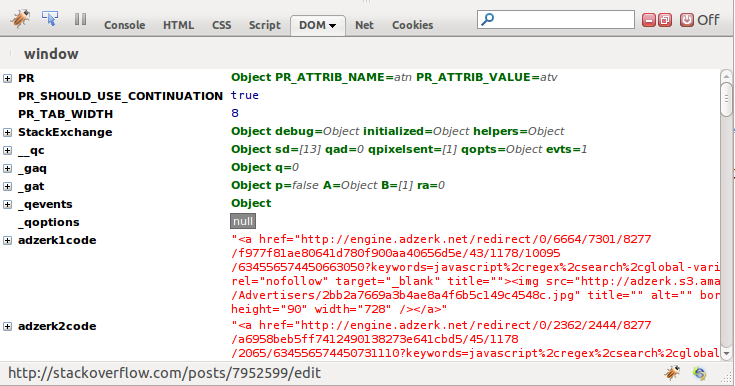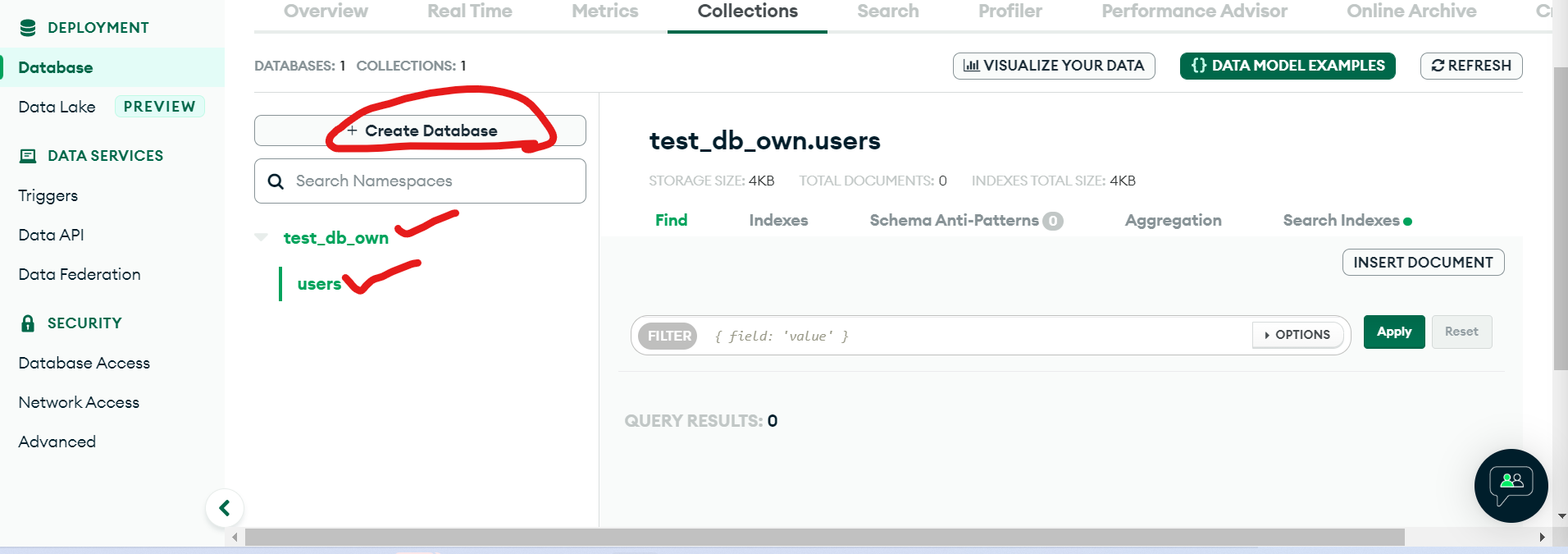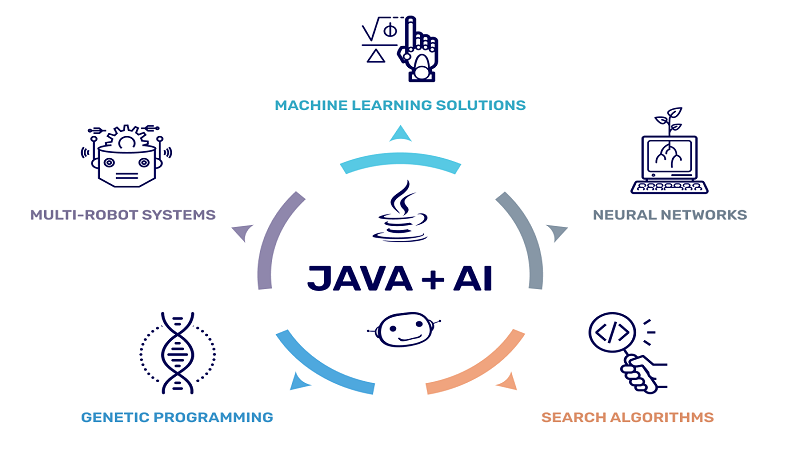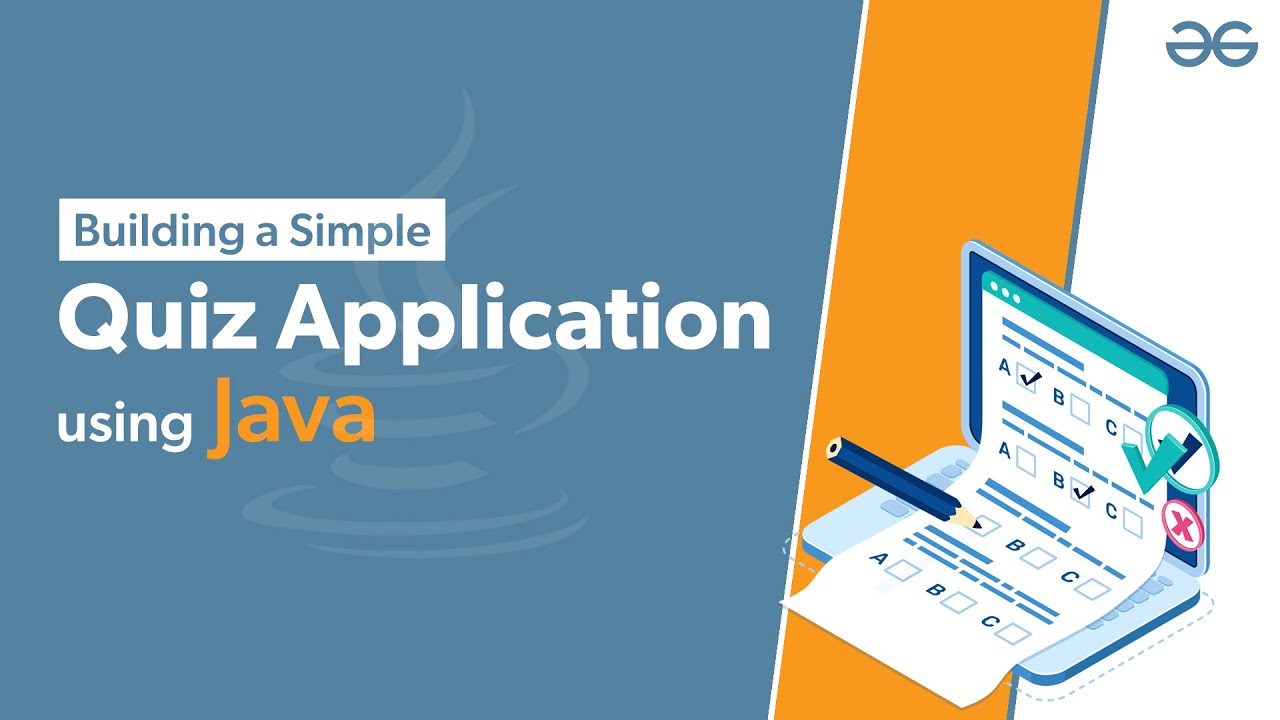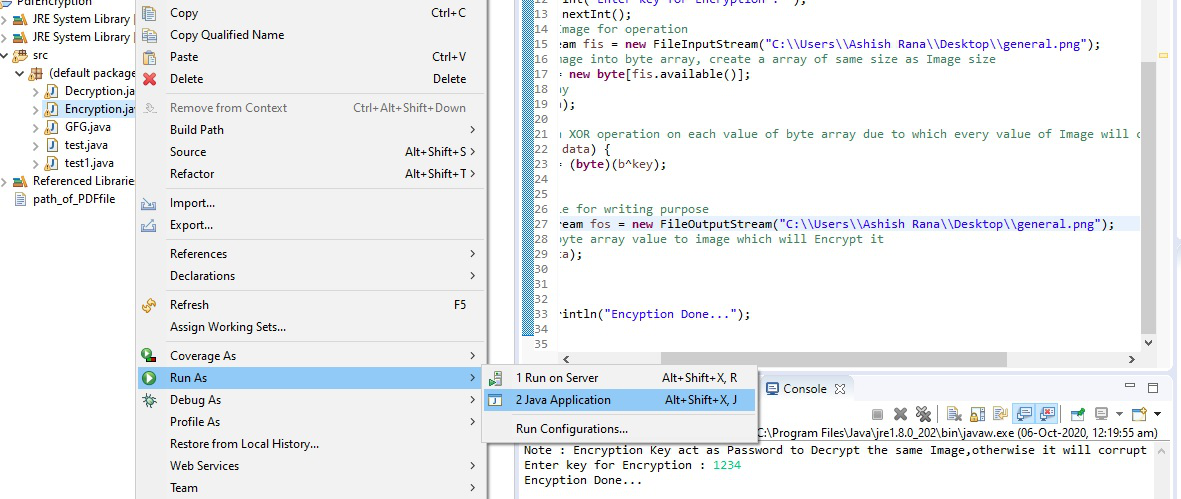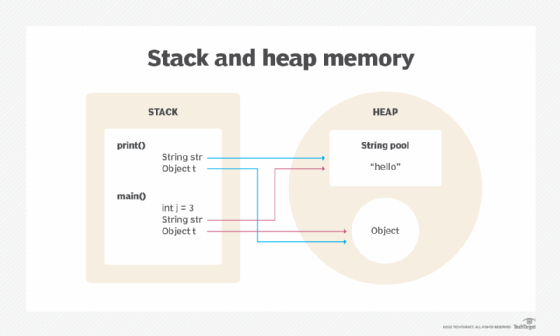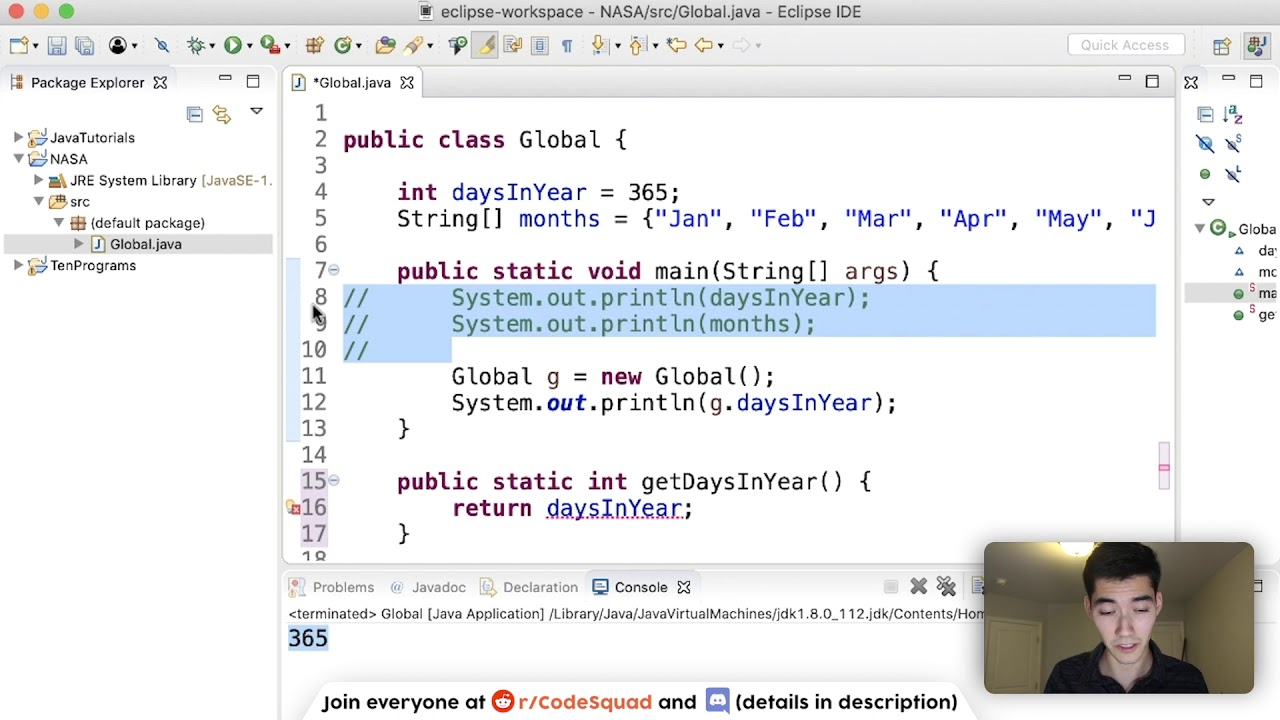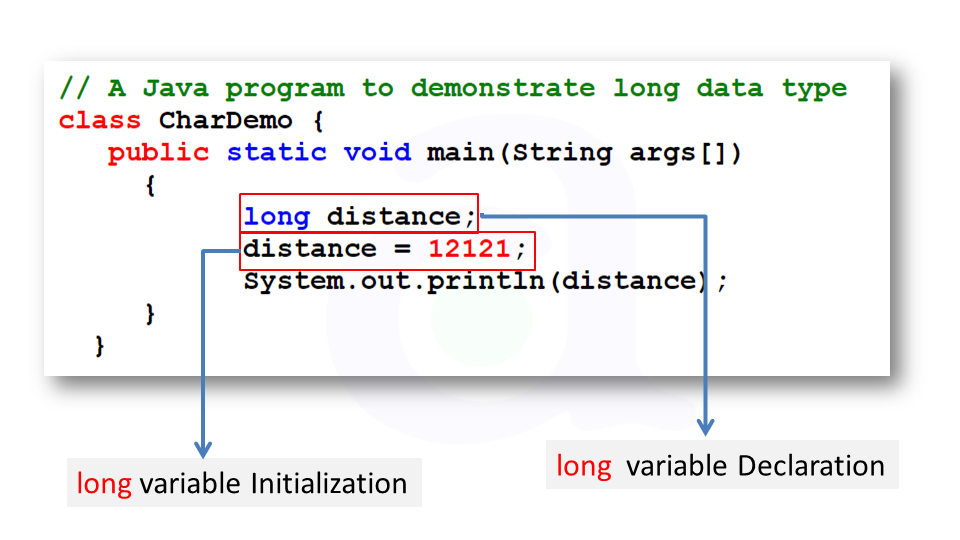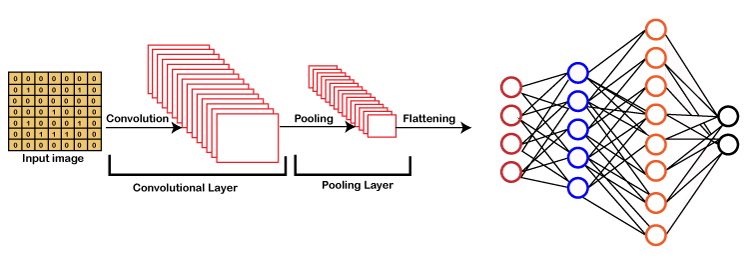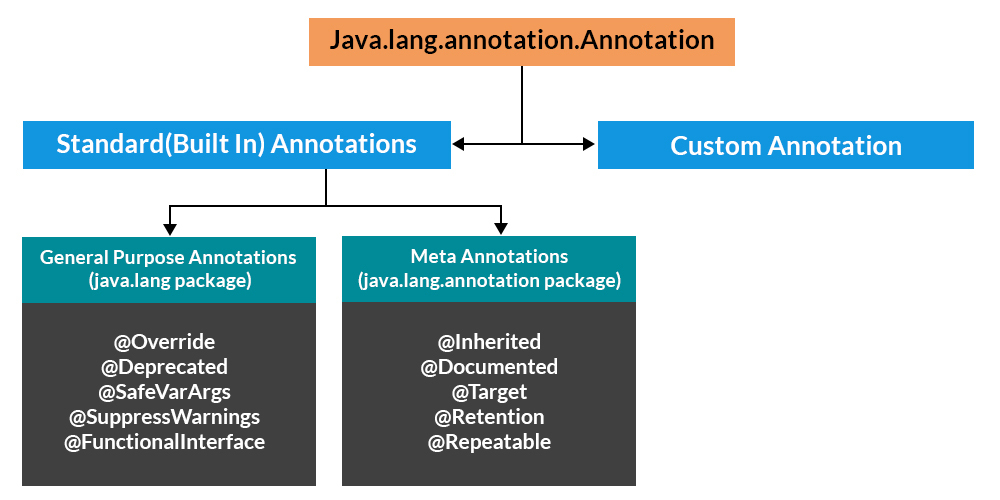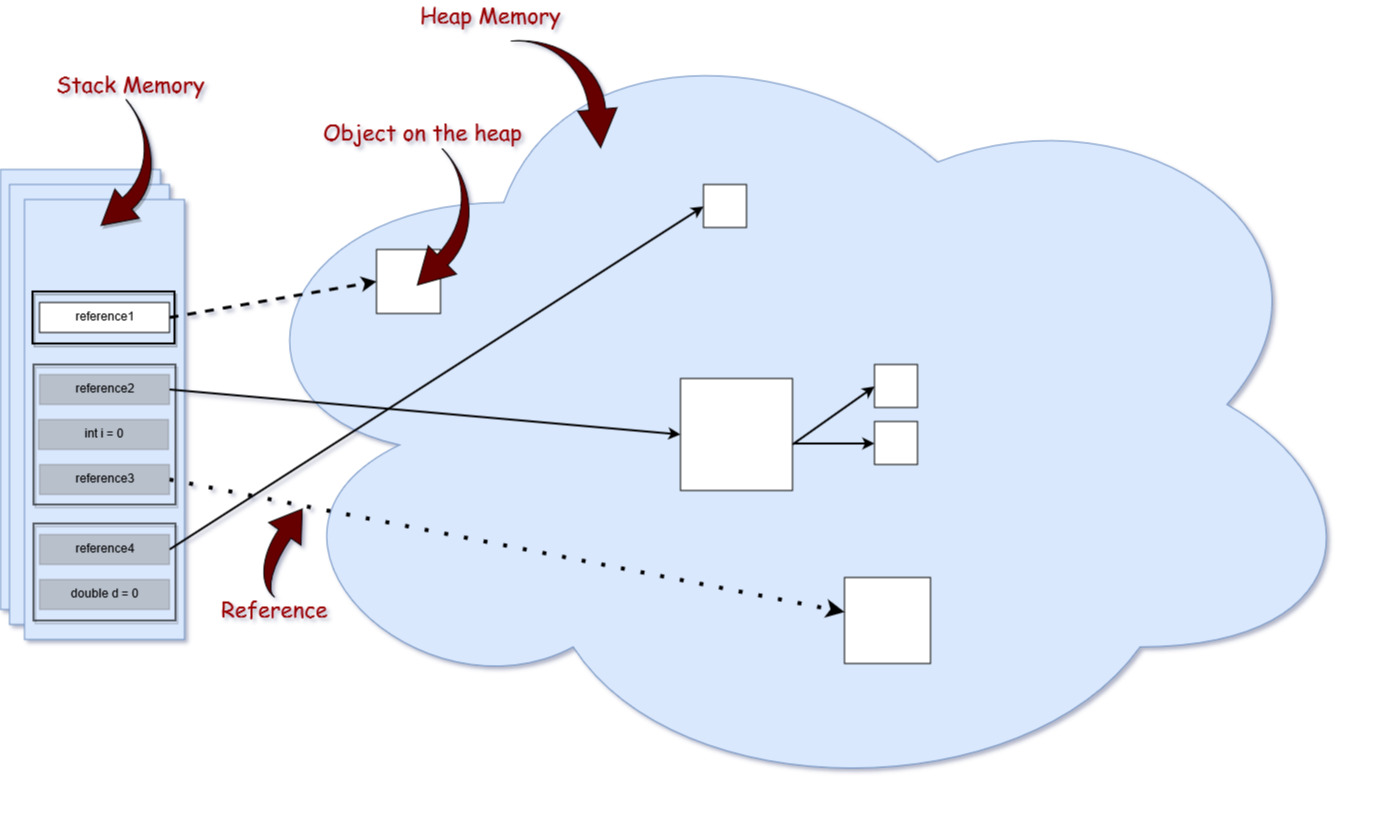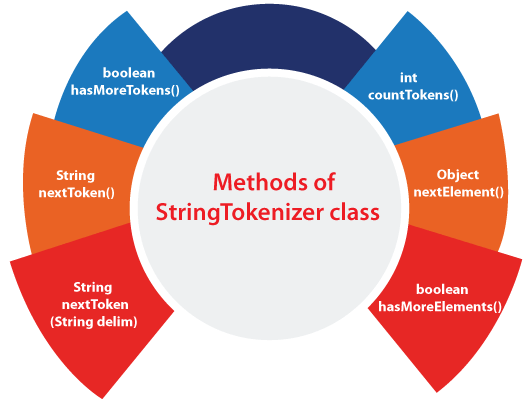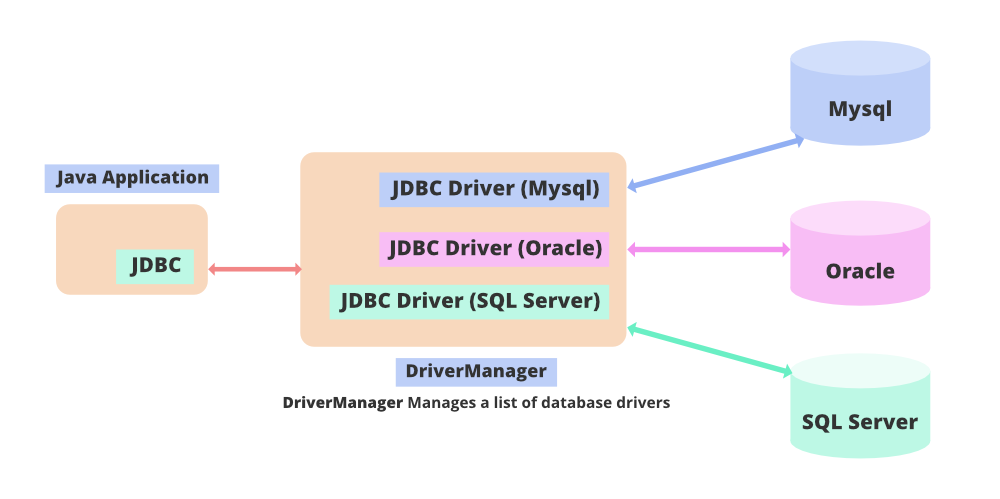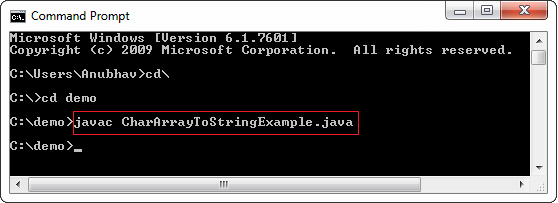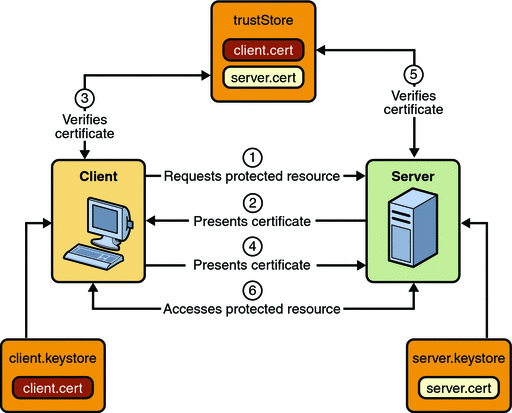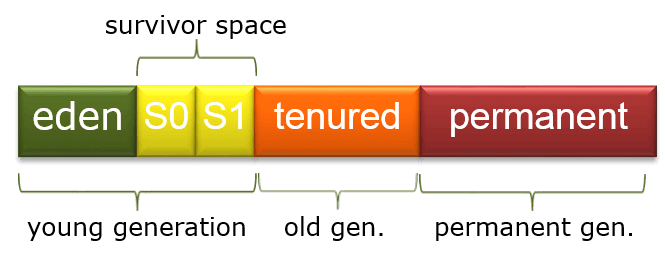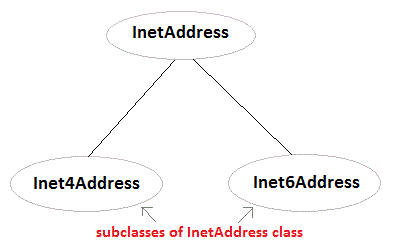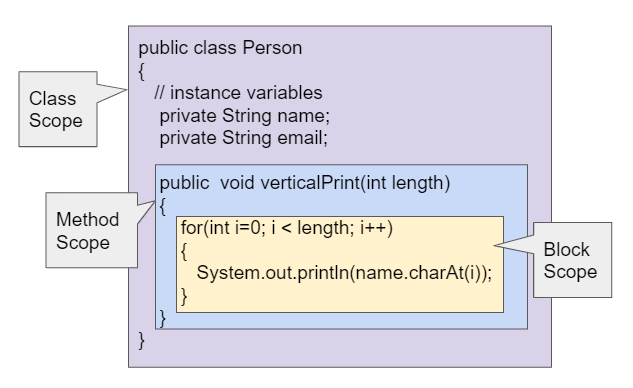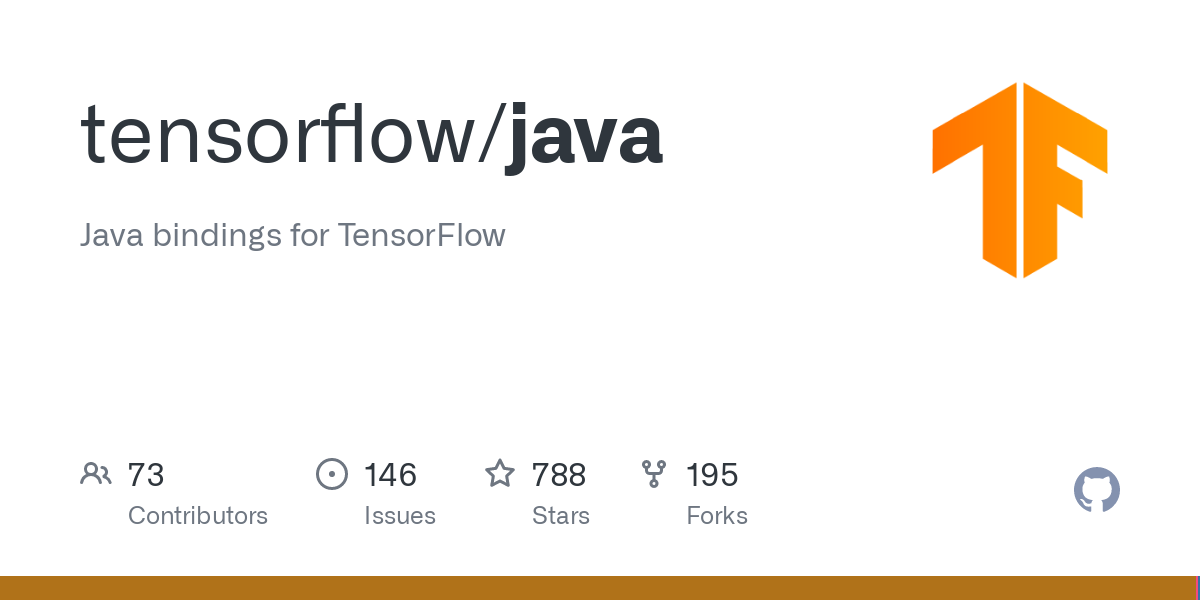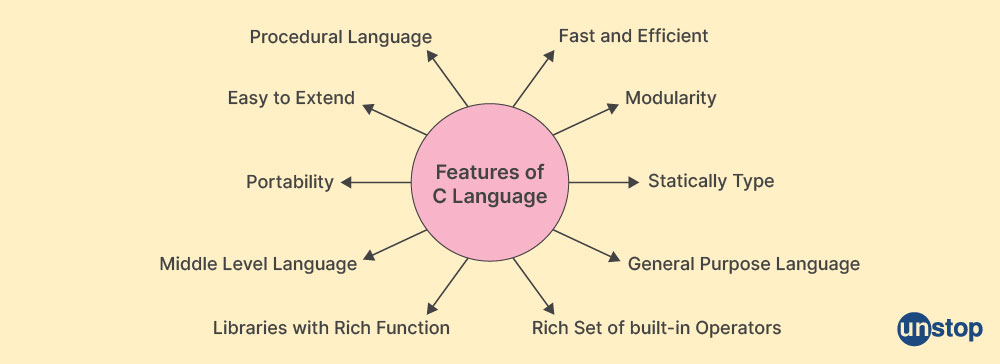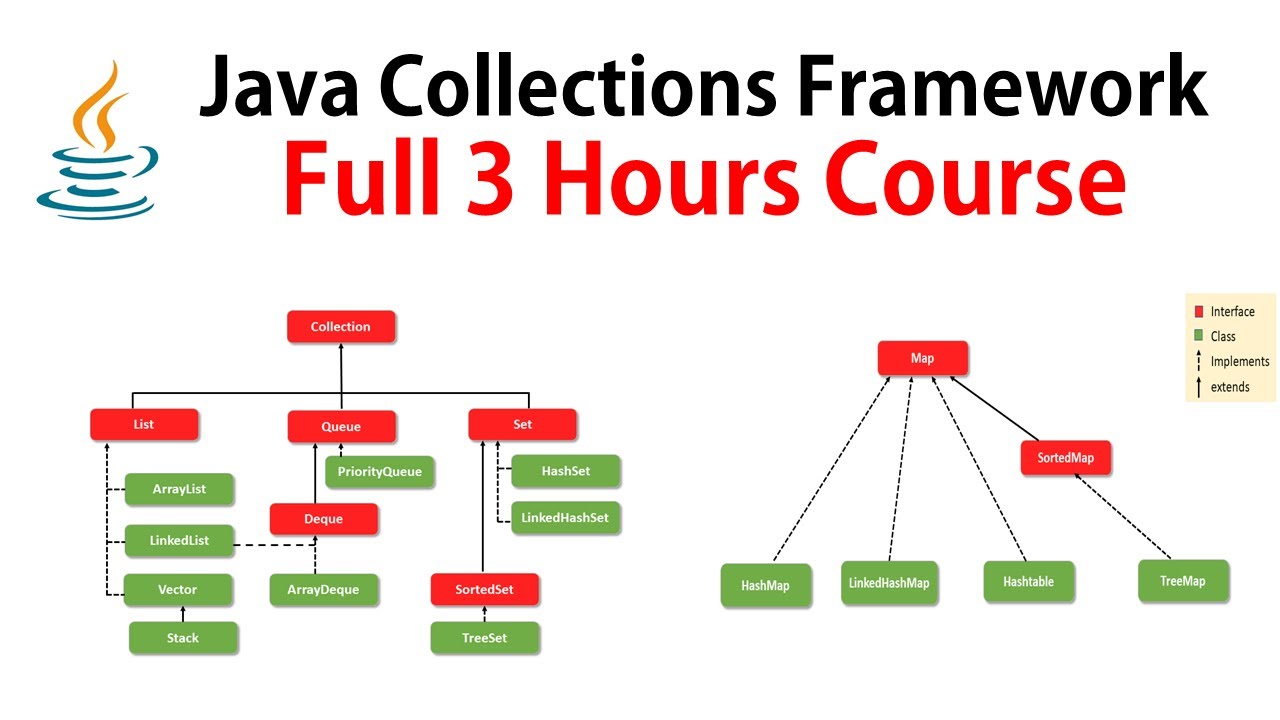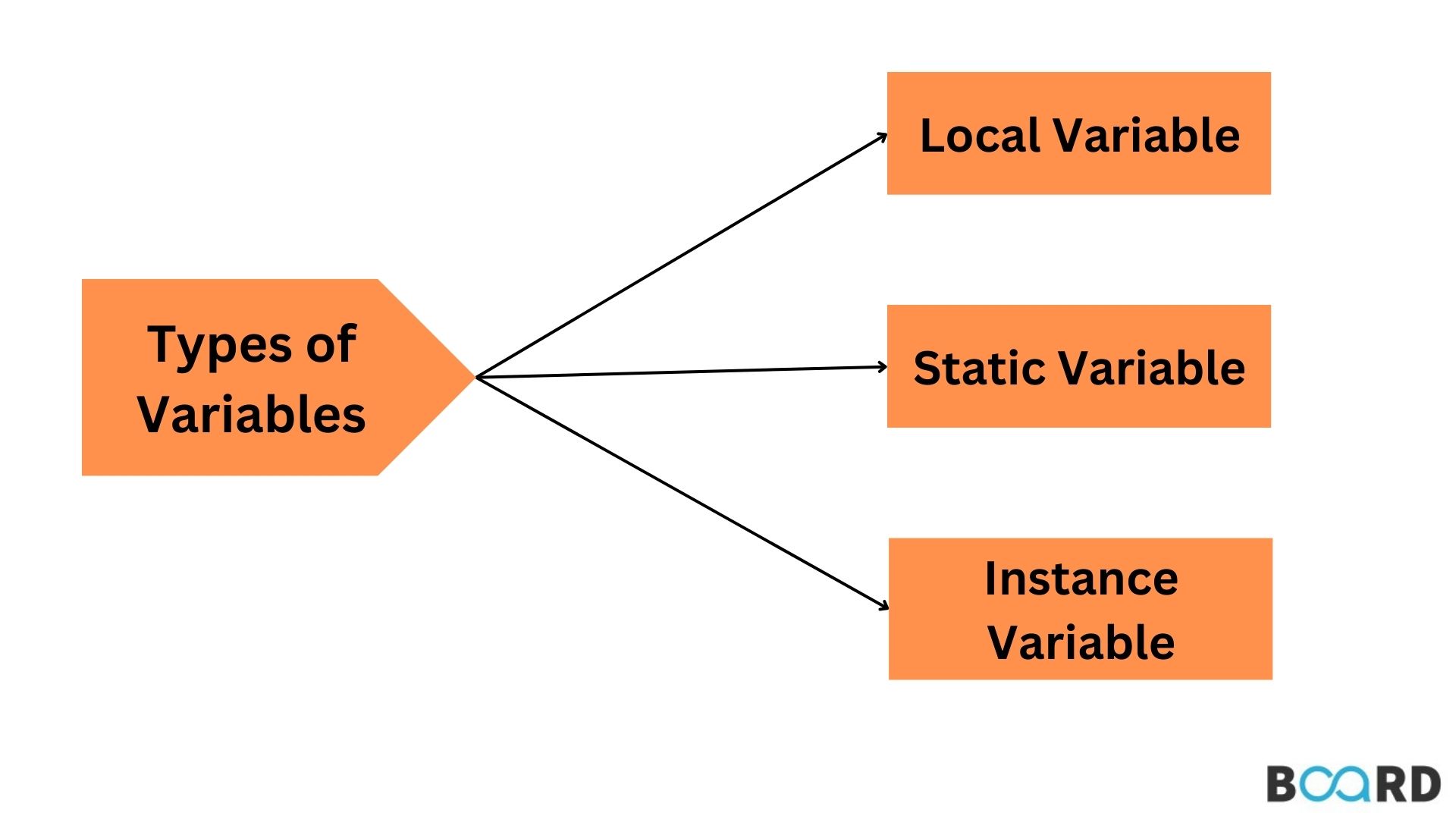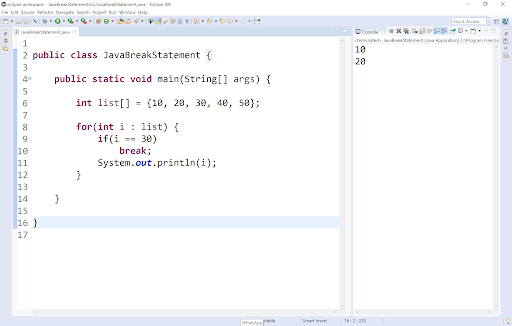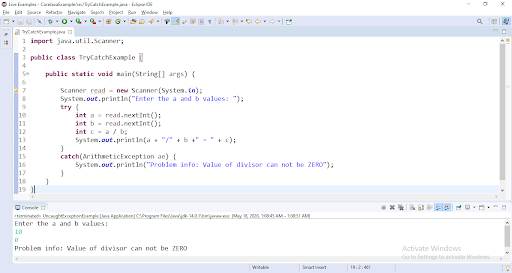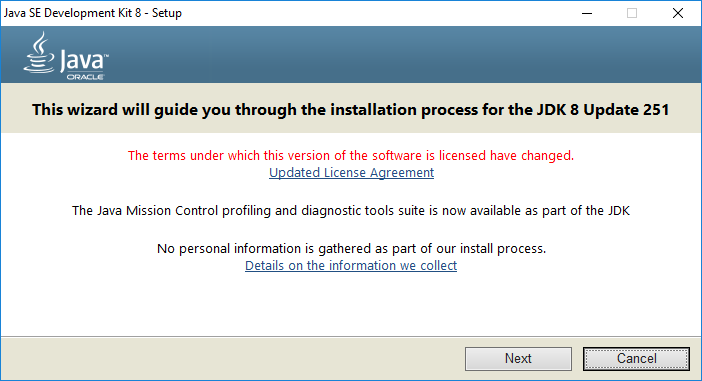exception handling in java with examples
exception handling in java with examples
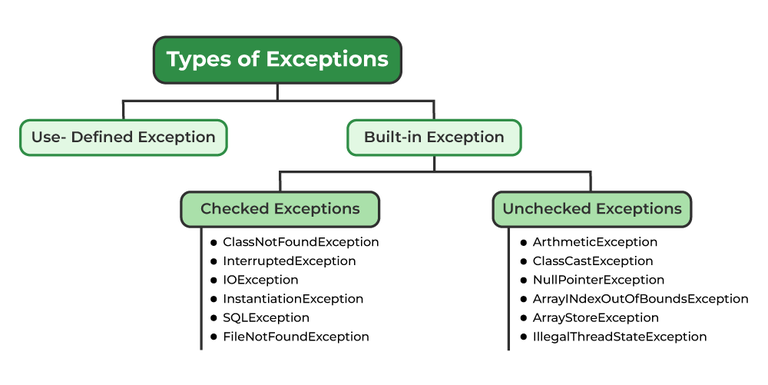
Exception Handling in Java: A Comprehensive Guide
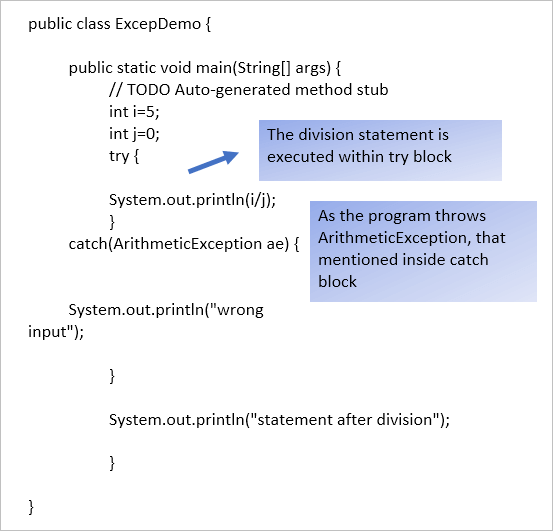
Exception handling is a crucial aspect of programming in Java. It allows you to handle runtime errors and unexpected events that may occur during the execution of your code. In this article, we will explore exception handling in Java with examples.
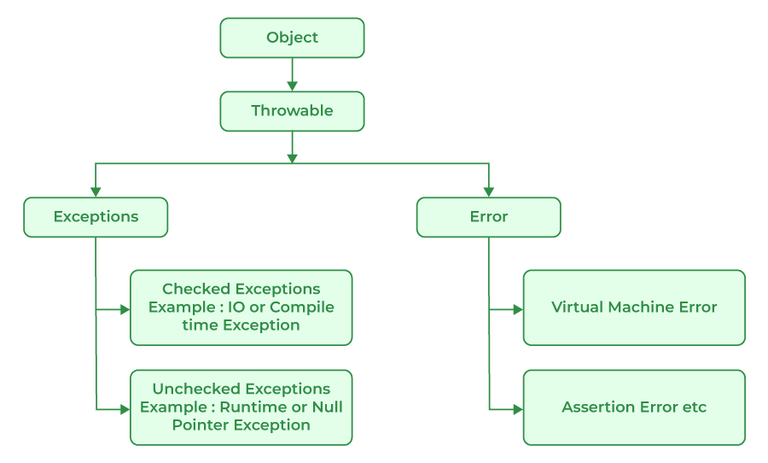
What are Exceptions?
In Java, an exception is an event that occurs during the execution of a program that disrupts the normal flow of instructions. It's essentially an error or an unexpected situation that requires special processing to handle it correctly.
Types of Exceptions
Java has two types of exceptions:
Checked Exceptions: These are exceptions that must be explicitly handled by the programmer using try-catch blocks. Examples includeIOException, SQLException, and ClassNotFoundException. Unchecked Exceptions: These are runtime exceptions that do not require explicit handling. They can be handled, but it's not mandatory. Examples include ArrayIndexOutOfBoundsException and NullPointerException.
try-catch Block
The try-catch block is the fundamental construct for exception handling in Java. The basic syntax is as follows:
try {// Code that may throw an exception
} catch (ExceptionType e) {
// Code to handle the exception
}
Here's a simple example:
public class Example {public static void main(String[] args) {
try {
int x = 5 / 0;
} catch (ArithmeticException e) {
System.out.println("Caught an ArithmeticException: " + e.getMessage());
}
}
}
In this example, a division by zero is attempted. The try block throws an ArithmeticException. The catch block catches this exception and prints a message to the console.
Multi-Catch
Java 7 introduced the concept of multi-catch, which allows you to handle multiple exceptions in a single catch block:
public class Example {public static void main(String[] args) {
try {
int x = 5 / 0;
} catch (ArithmeticException | IOException e) {
System.out.println("Caught an ArithmeticException or an IOException: " + e.getMessage());
}
}
}
In this example, the catch block can handle both ArithmeticException and IOException.
Finally Block
The finally block is used to perform cleanup operations that need to be executed regardless of whether an exception was thrown. It's often used for closing files or connections:
public class Example {public static void main(String[] args) {
try {
int x = 5 / 0;
} catch (ArithmeticException e) {
System.out.println("Caught an ArithmeticException: " + e.getMessage());
} finally {
System.out.println("Finally block executed");
}
}
}
In this example, the finally block is guaranteed to execute regardless of whether an exception was thrown.
Best Practices
Here are some best practices for exception handling in Java:
Use checked exceptions: Use checked exceptions when possible to ensure that your code handles errors and unexpected situations correctly. Log exceptions: Log exceptions whenever possible to facilitate debugging and error tracking. Avoid catching generic exceptions: Avoid catching generic exceptions likeException or RuntimeException, as they can mask more specific issues. Use multi-catch: Use multi-catch to handle multiple exceptions in a single catch block, as it simplifies code and reduces the need for multiple catch blocks. Document exceptions: Document exceptions using JavaDoc comments or other means to ensure that your code is well-documented and easy to understand.
In conclusion, exception handling is an essential aspect of programming in Java. By understanding how to handle checked and unchecked exceptions, as well as the use of try-catch-finally blocks, you can write robust and reliable code that handles errors and unexpected situations correctly.
java exception hierarchy
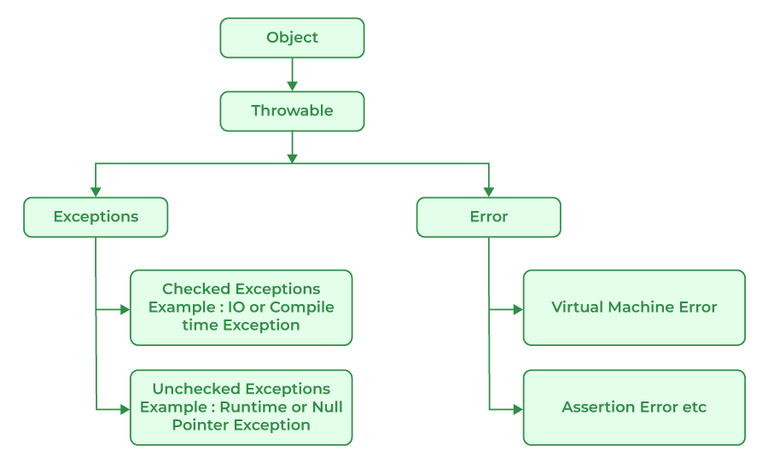
Here's an overview of the Java exception hierarchy:
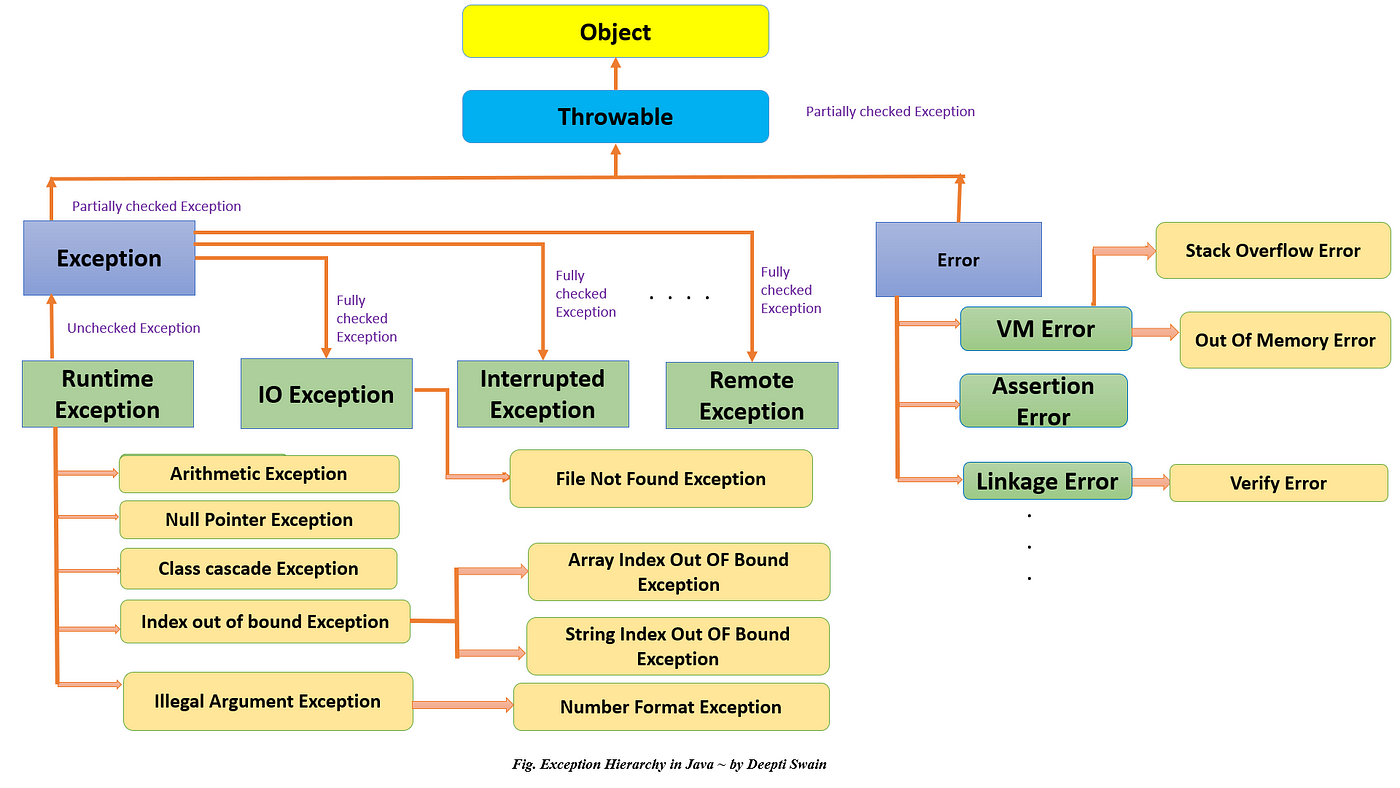
In Java, exceptions are a way to handle runtime errors that may occur during program execution. The exception hierarchy is a tree-like structure of classes and subclasses that provides a standard way to classify and respond to different types of exceptions.
The topmost class in the Java exception hierarchy is java.lang.Throwable. This abstract class serves as the superclass for all exceptions, providing basic methods and attributes such as:
getMessage(): Returns a human-readable string summarizing the error. getStackTrace(): Returns an array of stack trace elements. toString(): Generates a string representation of the exception.
From Throwable are derived several key classes that serve as the foundation for most exceptions in Java. These include:
java.lang.Error: This class represents low-level or high-level system errors, such as running out of memory or encountering an invalid method. java.lang.Exception: This abstract class is the superclass for all "normal" exceptions that can be caught and handled by a program. Examples include IOException, SQLException, and NullPointerException.
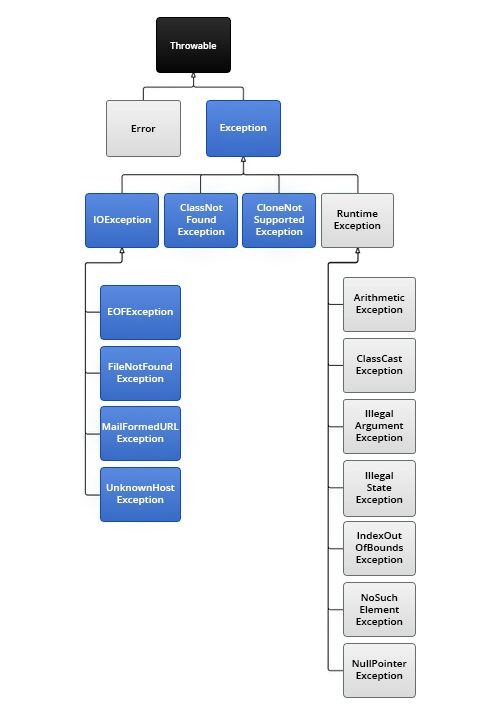
Within the Exception hierarchy are several key subhierarchies, including:
java.io.IOException: This class represents input/output-related errors, such as reading or writing to disk, network connectivity issues, and so forth. java.sql.SQLException: This class represents database-related errors, such as queries that fail due to invalid syntax or data inconsistencies.
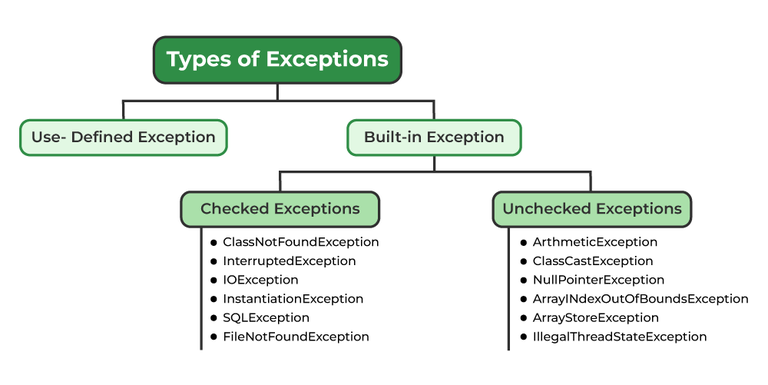
java.lang.RuntimeException: This abstract class is the superclass for all "runtime" exceptions, which occur during execution of a program, such as ArrayIndexOutOfBoundsException, StringIndexOutOfBoundsException, and so forth.
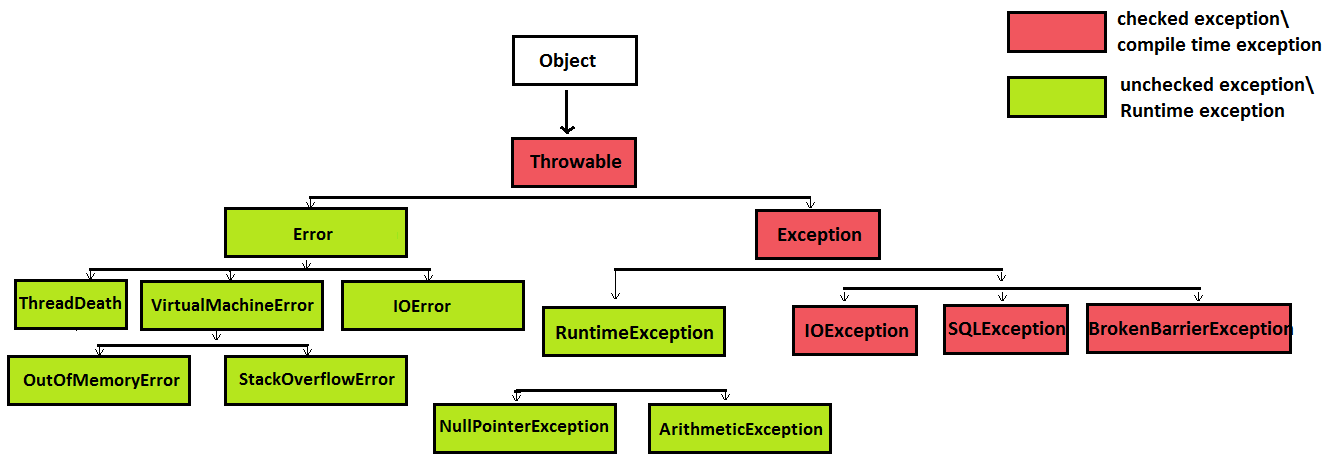
The exception hierarchy also includes various utility classes that provide additional functionality for working with exceptions, such as:
java.lang.StackTraceElement: Represents a single frame on the stack trace. java.lang.Throwable$WrappedException: A nested exception wrapped within another Throwable.
Understanding the Java exception hierarchy is crucial for any Java programmer, as it provides a standardized way to handle runtime errors and exceptions in their code. By familiarizing yourself with the different classes and subhierarchies, you'll be better equipped to write robust, reliable code that can recover from unexpected errors.

